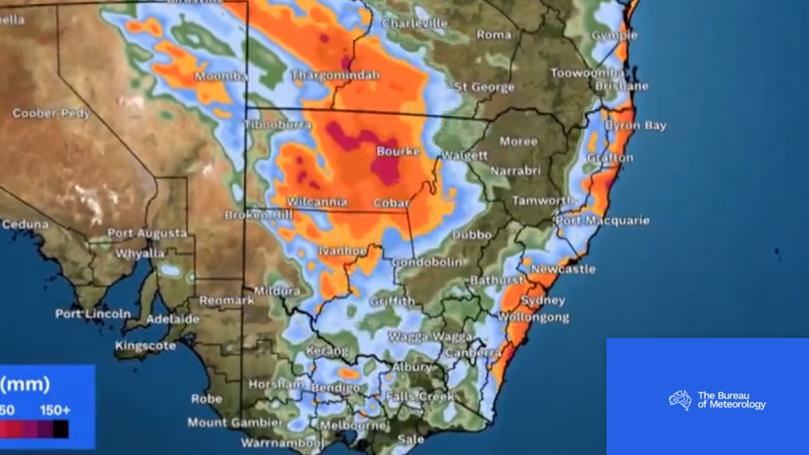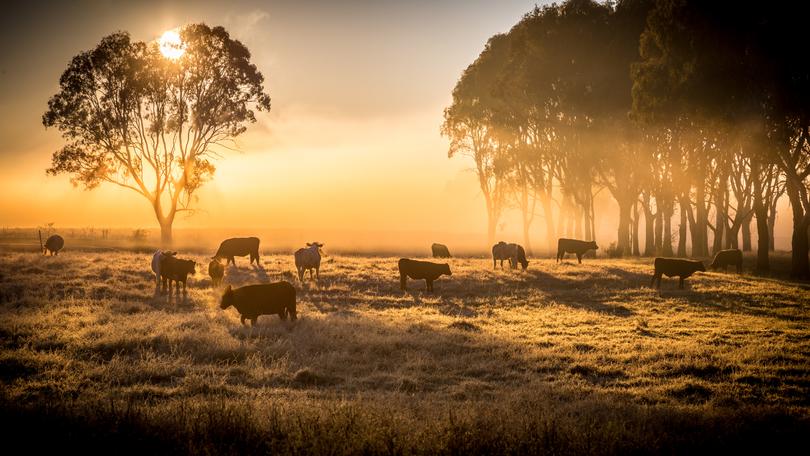Australian weather: Why does the Bureau of Meteorology keep getting it so wrong?

Sydney was forecast to rain all last Saturday. It didn’t.
Residents of Perth a few weeks ago braced for a deluge that never came.
Over Christmas and the New Year in Queensland’s south east, thousands were flooded and lost power after being hit by extreme weather conditions they weren’t warned about, just a fortnight after the Bureau of Meteorology was criticised for failing to predict the extent of Cyclone Jasper in the State’s north.
Sign up to The Nightly's newsletters.
Get the first look at the digital newspaper, curated daily stories and breaking headlines delivered to your inbox.
By continuing you agree to our Terms and Privacy Policy.And Australia’s cattle farmers last year lost millions when they accepted the BoM’s forecast of a hot, dry summer and sent thousands of head for slaughter because they feared they couldn’t afford to feed them through another drought. The dry didn’t eventuate and the beef price collapsed by up to 70 per cent.
If you’ve found yourself wondering lately what’s going on with the BoM’s weather forecasts, you are by no means alone.
There is no shortage of critics who will tell you the BoM - the federal government body that costs taxpayers more than $300m a year and is currently putting in place a $2b tech upgrade — is off by a mile.
For those whose livelihoods rely on the weather, the quality of the BoM forecasts has prompted them to look to other sources, often multiple ones, for a more accurate measure of what’s coming.

One of those increasingly trusted sources is the Higgins Storm Chasing Facebook page, which picked up hundreds of thousands of views off the back of Queensland’s wild weather over the summer and now has 1.1 million followers.
Speaking from St Louis in the US ahead of an expected tornado he was chasing on Wednesday, Higgins’ chief forecaster Thomas Hinterdorfer did not want to criticise the BoM but said that his site received a lot of complaints from people over errors from the forecasters of record.
“A lot of people do come to us with complaints,” he told The Nightly.
“There was obviously a lot of criticism about the forecast in the past summer... we probably received daily complaints about that, especially in the lead up to big rain events, because obviously, for places like Southeast Queensland, it rained for most of the summer.
“It didn’t really follow a trend. That was something we picked up on quite early. And we had above average rainfall on our members maps for, I think, November onwards.”
Mr Hinterdorfer said the Higgins team used as many as ten weather models to make its own forecasts, which is an approach mirrored by many farmers, according to South Australian cattle breeder Tim Burvill.
A vocal critic of the BoM’s “increasingly wrong” rainfall forecasts, Mr Burvill told The Nightly many farmers were still reeling from the forecast drought that didn’t come last year.
“To explain the significance, in 2018 and 2019 there was a very bad drought up in NSW and southern Queensland. And when a drought comes along, farmers will either make a decision to offload their stock, or they dig in and decide to feed their livestock grain or supplements until it rains,” Mr Burvill said.

“A lot of farmers up in that neck of the woods spent an incredible amount of money feeding their livestock and they racked up huge losses and debts because of it.
“What I think happened was a lot of those farmers said to themselves, alright, if this happens again, we’re not going to go and do that we’re going to sell our livestock.
“And so when the predictions from the Bureau of Meteorology first started coming out in March saying that there was an El Nino watch and it’s going to be a drier year, that freaked everyone out.
”The reaction was quite severe to these predictions because they said we just can’t do it again, we’re just not going to feed through another drought. So that’s what started causing the livestock price to collapse and the confidence of the industry just collapsed with it. And we saw basically, at least the halving of of pricing.
“And when it got towards the worst point in mid to late October, prices were probably down 65 to 70 per cent on young cattle.”
Mr Burvill, who runs about 400 breeding cattle on 2000 acres in southeast SA, said he didn’t know what had changed to make the BoM’s forecasts less accurate but that there were concerns across the agriculture industry and a reluctance from the forecasters to accept when they were in the wrong.
“It’s infuriating that their results are becoming more inaccurate,” he said.
“It would be a fair comment for them to say no one else can get it right and the weather’s just really hard to predict.
“But that’s just not entirely correct, because there are lots of other models and agencies around the world that myself and other farmers look at for rainfall and actually pay for as well.
And that’s why we’re so angry with the BoM, it’s not because no one got it right. It’s because they continually keep getting it wrong.
“And the excuses they come up with when they do get it wrong, it just doesn’t pass the pub test.
“Because they continually say climate change is making it harder for us to make our predictions. But that’s just crap. You know, like climate change isn’t occurring that quickly that a year down the track, you can’t predict the rainfall.
“I don’t know why it’s happened, or how it’s happened. But it certainly has happened.”
Nationals Leader David Littleproud called for a review of the BoM.
“The BoM is given a lot of taxpayer funding and we’ve got to continue to invest in it, but they’ve got to actually prove their worth as well,” he said.

“It’s not an open chequebook. And there needs to be greater accountability about what they’re what they’re actually putting out there and how they’re doing it because people people have lost money, a lot of money on on what they did at the start of the season.
“There’s just a lack of confidence in what their advice is for the short or long term and I think many producers now look to offshore data, US Navy sites, and all sorts to try and validate what they’re hearing from the BoM and to cross reference.
“There’s a lot of ingenuity by producers in looking abroad for information, which is disappointing when you’ve got a government funded organisation has given being given every tool to be able to do this sort of stuff. And farmers feel as though they’ve been let down.”
The BoM has been approached for comment.

